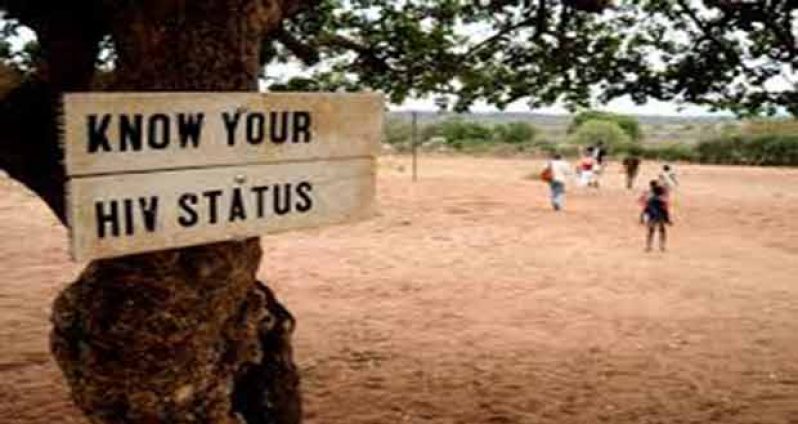NO one would dispute the great damage that HIV and AIDS have inflicted on the global scene over the last three decades. Indeed, the harm remains phenomenal for poor societies where entire economies continue to experience devastation, and where for some time now, adolescents (aged 10-19) remain vulnerable to HIV infection and who comprise a growing group of the HIV-infected.
For instance, among adolescents for Africa, AIDS is the leading cause of death, and globally, it is the second most leading cause of death. (1) In 2013 globally, there were 2,100,000 adolescents with HIV, of which there were 250,000 new infections among adolescents, and where two-thirds were adolescent females; (2) Again globally in 2013, 120,000 adolescents died of AIDS-related illnesses; and it was the only age group where deaths from AIDS were not declining; in fact, all the other age groups had a 38% reduction in AIDS-related deaths between 2005 and 2013.
In addition, globally, adolescents within key population groups as gay and bisexual adolescents, transgender adolescents, those adolescents who trade sex, and drug-injecting adolescents, face a high risk for contracting HIV, and who frequently are not beneficiaries of services. (2)
Due to this sustained adolescent plight three decades into the HIV and AIDS affliction, many leaders from around the world gathered in Nairobi, Kenya on February 15, 2015 to launch a new platform called ‘All In’ to speak to the gaps in HIV prevention, treatment, care, and support provision for adolescents.
UNAIDS, UNICEF, UNFPA, WHO, PEPFAR, the Global Fund to Fight AIDS, Tuberculosis and Malaria, the MTV Staying Alive Foundation and youth movements represented by PACT and Y+ all came together with Kenya’s President Uhuru Kenyatta to launch All In and to express a collective voice on the growing adolescent AIDS epidemic.
The ‘All In’ called for action in four areas (2): engaging, mobilising and empowering adolescents as initiators of change; upgrading data collection to produce better programming; support innovative approaches to provide adolescents with critical services consistent with their needs; and presenting the plight of adolescent on political agendas to hasten real action and marshal much-needed resources.
Further, in 2013, the World Health Organization (WHO) in collaboration with the United Nations Children’s Fund (UNICEF), the United Nations Population Fund (UNFPA), the United Nations Educational, Scientific and Cultural Organization (UNESCO), and the Global Network of People Living with HIV (GNP+), presented a publication to bring adolescents living with HIV (ALHIV) closely under the radar for HIV testing and counseling, treatment, care, and support.
The overview to this publication indicated that: “Adolescents (10–19 years) and young people (20–24 years) continue to be vulnerable, both socially and economically, to HIV infection despite efforts to date. This is particularly true for adolescents – especially girls – who live in settings with a generalised HIV epidemic or who are members of key populations at higher risk for HIV acquisition or transmission through sexual transmission and injecting drug use. In 2012, there were approximately 2.1 million adolescents living with HIV. About one-seventh of all new HIV infections occur during adolescence.” (3)
These concerns relate to the perception that many adults globally were graduating from HIV to an AIDS status in their twenties. Therefore, given that the median time from HIV to AIDS is 9.4 years (4), it is possible to conclude that many young people with HIV contracted the infection in their adolescence; also, indeed, there are those adolescents who became HIV-infected through mother-to-child-transmission.
These aforementioned statistics and observations attest to a growing adolescent AIDS epidemic and present significant negative implications for social and economic development, especially for resource-constrained countries. And indeed, HIV services must speak to both HIV-infected adolescents as well as provide effective HIV prevention interventions for HIV-free adolescents.
(This article is reprinted from: themisirpost.wordpress.com)
REFERENCES:
1. WHO. Health for the world’s adolescents: a second chance in the second decade. 2014 [February 21, 2015]. Available from: www.who.int/adolescent/second-decade.
2. All In to #EndAdolescentAIDS 2015 [February 21, 2015]. Available from: http://allintoendadolescentaids.org/.
3. WHO. HIV and adolescents: Guidance for HIV testing and counselling and care for adolescents living with HIV: recommendations for a public health approach and considerations for policy-makers and managers. 2013.
4. Morgan D, Mahe C, Mayanja B, Okongo JM, Lubega R, Whitworth JA. HIV-1 infection in rural Africa: is there a difference in median time to AIDS and survival compared with that in industrialized countries? Aids. 2002;16(4):597-603.
By Dr. Prem Misir



.jpg)








